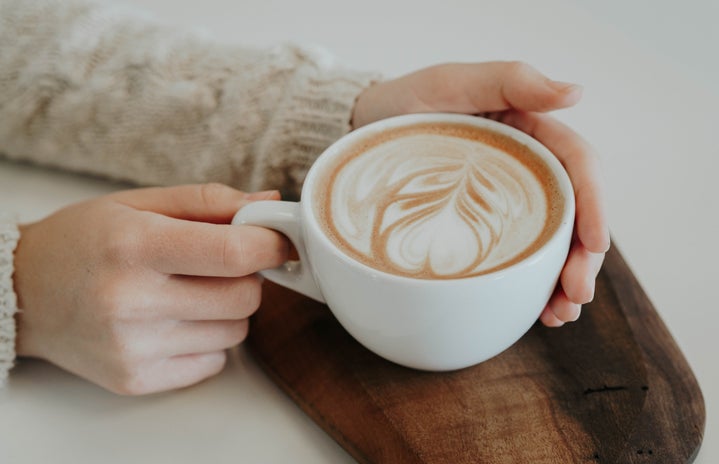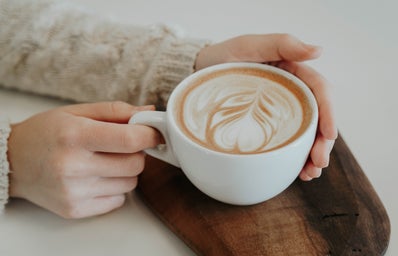Caio, mi amici! I just hit one month since my arrival, and I have finally found a “bar” (bar can mean an actual bar, a coffee place, or a small restaurant here in Italy). In honor of it, I thought I would talk about coffee culture in Italy! Come with me as I walk through my favorite coffees, cappuccino times, and how I make it at home in my apartment!
CULTURE DIFFERENCES
To begin, I’d like to explain some of the traditions around coffee. I’ll begin with the most widely known one: No cappuccino after noon. The reason behind this is that a cappuccino is seen as a breakfast drink. Otherwise, there is no kind of real meaning behind it, as far as I can tell at least! Other differences include drinking coffee after lunch or dinner rather than with a meal as I might at home. I think this may help the post-meal slump from all of the food because the caffeine from an espresso shot certainly wakes me up for the journey home from a restaurant, or my cousin’s house.
In addition, there are two ways to enjoy your coffee here in Italy: you can sip your cappuccino while eating a pastry at a table or stand at the counter and take a quick shot of espresso if you’re in a hurry. The latter custom is sometimes referred to as “al banco,” and is very common here in Italy, as Italians like to have a quick coffee on their way to work. I was completely intimidated by how the Italians could throw back black boiling hot espresso during my first few weeks here. I’ll let you know if or when I can actually do this without adding four sugar packets and waiting a minute or two for the coffee to cool. However, I think this is certainly a timesaver, as, after a minute or two, they are quickly on their way out the door and ready for work. Don’t order a cappuccino or other coffee to stand, as bigger coffees are meant to be savored while sitting with friends.
ICED COFFEE
Iced coffee is less common but can be found if you know where to look for it. Of course, once you order an iced coffee or frequent one of the 12-ounce iced coffee places people will know you are American, as iced coffee is seen as a “trendy” American version of coffee. Except among a select group of the young, Italy’s history of coffee culture means Starbucks is considered subpar and overpriced. However, you can find Starbucks in major cities such as Milan, Florence, or Rome, but they are often not what one might expect.
STARBUCKS
Recently I decided to visit the Starbucks Roastery in Milan, which is located at the historic center, right near the Duomo inside of an old post office. The interior is grand and modern and certainly makes it all seem very Insta-worthy. However, don’t fall for this tourist trap! I paid ten Euros for a coffee milkshake that only made my stomach turn and was certainly not worth the cost.
If you are looking for a more budget-friendly option to have your favorite coffee brand, Starbucks does sell small cups of coffee in grocery stores for one or two Euros that are mocha or caramel flavored, something I haven’t really seen in the U.S. Regardless of the type of grocery store, you will find these on the shelf, but not necessarily sold old. I think they’re mostly there for study abroad students like my roommates, and I who certainly have these lining our fridge.
Honestly, there are better brands of coffee here in Europe to choose from. If you feel the need to go to a mainstream brand, try Illy, which is an Italian brand I believe that you can find all over Europe! They offer a much more affordable and authentic cup of coffee, check out this brand. They also serve a great array of pastries (their raspberry tart is my favorite).
However, I recommend finding a cute, local cafe where the cappuccino or Caffe Shakerato (more on those later) is only three Euros and better quality. Please forgive me if, after a month, I have become a coffee snob, but it’s very true that the European atmosphere adds to the experience.
COST
As I previously mentioned, coffee is much cheaper in the U.S. According to my one friend, it’s easy to get an espresso for 1.50-2 or a cappuccino for 2-2.50 Euros. This contributed to Starbucks effectively being muscled out of the Italian coffee market. Aside from my unfortunate splurge, the most I have paid for coffee is 4.50, and that was for an iced coffee which is typically more expensive. This means, it’s very easy to go out with friends for coffee every day and contributes to it being a staple of Italy’s social culture.’
GRAB AND GO
Most bars will expect you to sit and drink your coffee if you are not ordering it “al banco.” As such, you must ask for it “per vie,” or, “to-go” if you want to take your cappuccino and run to class. Other quick options include pocket coffee, which can be found in the grocery store. Pocket coffee is usually a sweet chocolate with a dark shot of espresso encased inside. These can quickly get messy, but they’re very good if you’re in a rush.
Most schools also have coffee vending machines that can make whatever coffee you want! At The Universita Cattolica, where I study, there are several vending machines that can make any kind of hot coffee you might want. It’s made from power so it’s not as good as the usual coffee, but it is 70 cents!
However, if you’d like to make it at home, be prepared not for a coffee maker, but a Moka pot. Invented in the 1930s, it’s a tried-and-true method that has been used for almost a century. It’s a small silver pot that sort of resembles a compartmentalized teapot. The bottom part is filled with water, and coffee grounds are placed above it. Then, you boil it on the stove, and the coffee will rise to the top. Of course, you’ll get burnt, spill coffee on the floor, and the stove, and your cute outfit you really wanted to wear for class, but those are, of course, secondhand accounts. As you can imagine for those of us not native to Italy the method isn’t exactly foolproof, hence why I’ve been supplementing with heavy portions of sugar, and a little bit of Starbucks flavoring. However, if you wait for the coffee to cool, and you buy a pitcher you can add milk, sugar, and ice for the cheapest iced coffee with only half an hour of work!
QUALITY
Interestingly, the difference in the quality of the coffee here when compared to the U.S. is significant. Usually, I get sick when I drink coffee, however here I don’t even get a stomachache. Interestingly, it’s because Italians use less milk, and few additives in their coffee, so you’re drinking coffee that is much better for you.
MY TOP FIVE COFFEES
So, taking all of that information, what types of coffee would I suggest?
5. Caffè Marocchino
The direct translation is “spotted,” and as the name implies it is a drink with other things added like a “spot” of milk or cocoa! It is usually made with espresso, a bit of cocoa powder, a little bit of milk, and possibly some chocolate. It’s served in a small cup so that you don’t get a sugar high, but it is certainly a sweet treat!
4. Affogato
An affogato is creamy vanilla gelato with an espresso poured on top. While not necessarily typically sipped (eaten?) in the morning, I drink this once a week after lunch or dinner! The sweetness of the vanilla mixed with the bitterness of the coffee is the perfect flavor combination!
3. Espresso
Whether savored while sitting or sipped quickly on the way to class it’s a fast and delicious way to jumpstart your day! I add a lot of sugar, but if you’re used to black coffee, you can drink it without additives.
2. Cappuccino
I’ve come to love this drink! It’s the same as in the US, but it’s just so good! If you told me before I left for Italy that I would drink this every day I wouldn’t believe you, but its become one of my favorite things to sip while studying! You can also get it with chocolate or cancel added sometimes!
1. Caffe Shakerato
Caffe Shakerato is my favorite type of iced coffee here in Italy! Each bar will prepare these differently. I’ve received this drink in a very tall glass covered in caramel, and I have also received it in a martini glass. Either way, this iced coffee is definitely amazing, and maybe even better than the iced coffee in the U.S. “Shakerato” means “shaken” in Italian, and that’s exactly how it’s made, by shaking espresso, ice, and caramel in a cocktail mixer before serving it.
As a self-proclaimed coffee addict, I won’t stop talking about how much I love the coffee here, much to my friends and family’s chagrin. I have to say, I never thought I would enjoy drinking a hot coffee, but now I drink a cappuccino just as much as iced coffee. Italy truly does have the best coffee in the world. I hope that Starbucks and other companies in the U.S. will improve their coffee-making process so that I can enjoy coffee of a similar quality at home. For now, I’m going to enjoy the cappuccino I’ve been drinking while writing!


